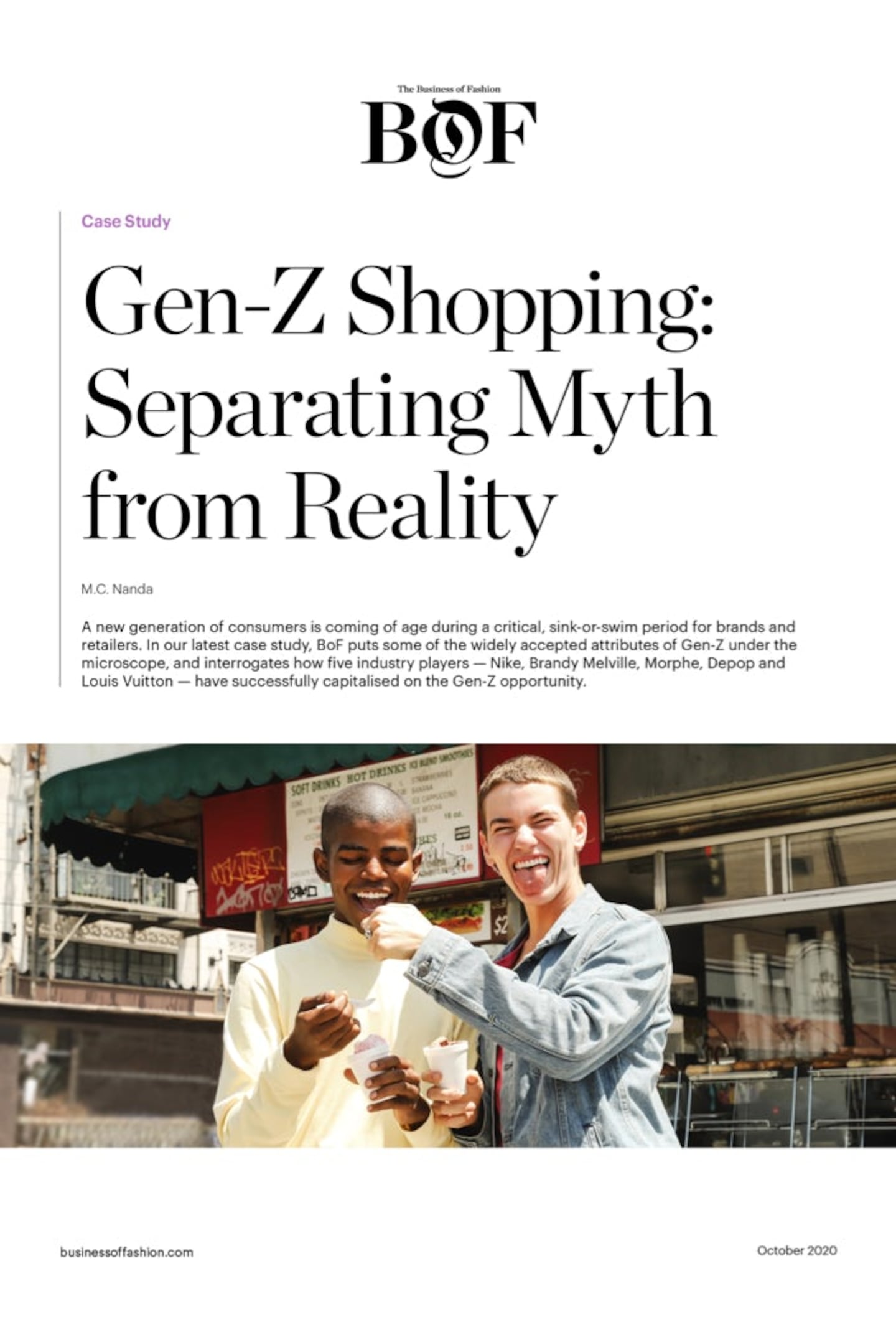
The Business of Fashion
Agenda-setting intelligence, analysis and advice for the global fashion community.

Agenda-setting intelligence, analysis and advice for the global fashion community.

Winning over Gen-Z will be crucial to many brands’ and retailers’ post-pandemic plans: the consumer group currently accounts for 40 percent of global consumers and $150 billion in spending power in the United States alone, according to McKinsey & Company. What’s more, Bain & Company estimates that Gen-Z spending could make up 40 percent of the global market for personal luxury goods by 2035. As this cohort, born approximately between 1997 and 2012, gradually joins the workforce and gains financial autonomy, they are set to power even higher rates of consumption once an economic recovery takes hold.
There have never been more ways to reach young consumers, and they have never been more vocal about what they want and expect from brands. Teenagers are looking to fashion companies, from their favourite resale platforms to influencer brands, to not just reflect their values and beliefs but to act as an extension of them.
Yet Gen-Z is also a misunderstood generation, one that is both underestimated and overrated in equal measure. Companies targeting this next generation of consumer need to be able to see through the stereotypes and challenge received wisdom. Learning how to listen, what to pay attention to, and how to incorporate these insights within your strategy without overwhelming your customers or compromising your offering will become increasingly important in a crowded marketplace — one that has been made even more challenging by Covid-19 threatening the job market, crushing consumer confidence and upending shopping habits.
Using a holistic lens, this case study decodes how to target the Gen-Z consumer by painting a nuanced picture around five “guiding assumptions” about the cohort, or widely accepted characteristics, behaviours and perspectives attributed to the generation, and then uses five companies to interrogate how they have capitalised on those assumptions with measurable success across branding, marketing, retail and business operations.
ADVERTISEMENT
The companies analysed — Nike, Brandy Melville, Morphe, Depop and Louis Vuitton — were selected for the diverse and unique lessons they offer on attracting and building loyalty with Gen-Z consumers — from tapping creators and cultivating communities to customising youth-relevant marketing strategies — through distinct approaches that vary from platform to platform and country to country.
While no generation is a monolith, and no single strategy, campaign or message will guarantee success, this case study will break down a range of approaches to examine as you target the next generation of shoppers.
Click below to read the case study now.
Often left out of the picture in a youth-obsessed industry, selling to Gen-X and Baby Boomer shoppers is more important than ever as their economic power grows.
This month, BoF Careers provides essential sector insights to help PR & communications professionals decode fashion’s creative landscape.
The brand’s scaled-back Revolve Festival points to a new direction in its signature influencer marketing approach.
Brands selling synthetic stones should make their provenance clear in marketing, according to the UK’s Advertising Standards Authority.